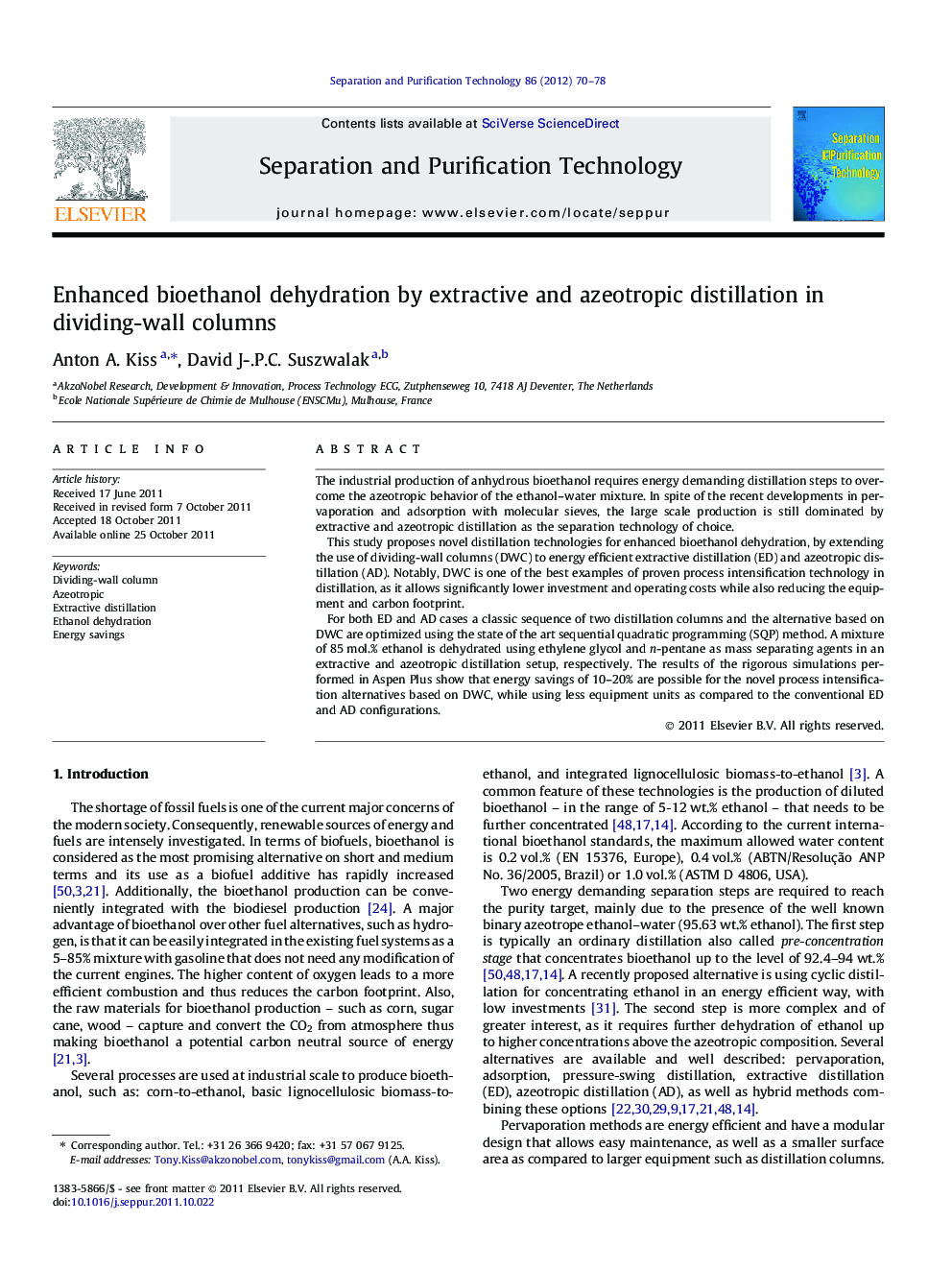| Article ID | Journal | Published Year | Pages | File Type |
|---|---|---|---|---|
| 642327 | Separation and Purification Technology | 2012 | 9 Pages |
The industrial production of anhydrous bioethanol requires energy demanding distillation steps to overcome the azeotropic behavior of the ethanol–water mixture. In spite of the recent developments in pervaporation and adsorption with molecular sieves, the large scale production is still dominated by extractive and azeotropic distillation as the separation technology of choice.This study proposes novel distillation technologies for enhanced bioethanol dehydration, by extending the use of dividing-wall columns (DWC) to energy efficient extractive distillation (ED) and azeotropic distillation (AD). Notably, DWC is one of the best examples of proven process intensification technology in distillation, as it allows significantly lower investment and operating costs while also reducing the equipment and carbon footprint.For both ED and AD cases a classic sequence of two distillation columns and the alternative based on DWC are optimized using the state of the art sequential quadratic programming (SQP) method. A mixture of 85 mol.% ethanol is dehydrated using ethylene glycol and n-pentane as mass separating agents in an extractive and azeotropic distillation setup, respectively. The results of the rigorous simulations performed in Aspen Plus show that energy savings of 10–20% are possible for the novel process intensification alternatives based on DWC, while using less equipment units as compared to the conventional ED and AD configurations.
► Bioethanol dehydration by advanced distillation technologies. ► Extractive and azeotropic distillation in dividing-wall column. ► Optimal designs by sequential quadratic programming (SQP). ► Energy savings of 10–20% with less equipment units.
